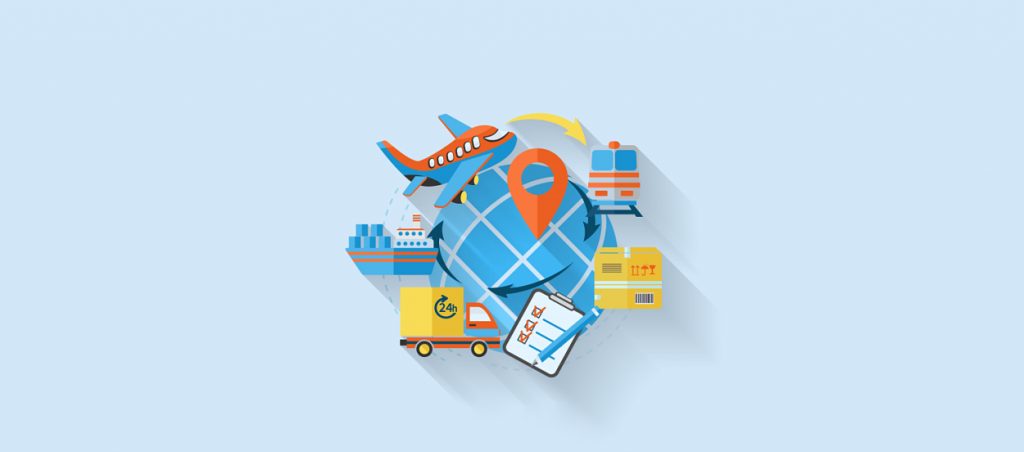How to Build Tomorrow’s Supply Chain Today
Some supply-chain processes, such as truck-loading at warehouses, “can be reimagined in their entirety” on the road to developing the “touchless supply chain.”
The trouble with delivering the goods is that people expect you to, well, deliver the goods. Little wonder then that a new Deloitte Insights market report contends that “considering the innovation gaining momentum in transportation and logistics, consumer expectations will only continue to rise.”
The detailed report, posted online on Dec. 11, posits that reckoning with the rapid growth of eCommerce along with shifting trade patterns, and continued infrastructure constraints will force logistics providers and freight haulers to build “a next generation supply chain” to meet head on the rising expectations consumers have for goods delivery.
“While still in early stages, the foundations of a next-generation global movement-of-goods network are actively forming,” the report states. “We are already seeing progress across the three pillars that will underpin the future network: connected community, the ability to collaborate and connect with partners to see across the network; holistic decision-making, the ability to harness and harmonize traditional and new data to continuously learn and predict; and intelligent automation, the ability to utilize the right human or machine for the task at hand and automate digital processes.”
Deloitte predicts that over time, global consumers demanding greater delivery volume, speed, flexibility, transparency, and convenience will force change. With that in mind, supply chain players “should define their future ambitions and where to play in the future movement of goods ecosystem. Guided by a strategic vision, organizations can begin examining how the foundational pillars, connected community, holistic decision-making and intelligent automation, can help them win in chosen segments and markets — and the foundational and emerging capabilities required to enable those pillars.”
Here’s a look at those three pillars Deloitte sees as the foundation of a new global supply chain for consumer goods:
1. Connected Community
The idea driving the development of Integrated data platforms or digital freight networks is to enhance visibility across the supply chain.
“For regional parcel carriers and logistics providers, the improved, real-time visibility into available cargo and tech-enabled coordination could be what’s needed to materially improve utilization,” the report suggest. “The ability to leverage the assets of other carriers through shared models could help expand coverage and monetize or acquire additional capacity, enabling fleets that flex with demand or create new revenue streams. A single 26-foot truck traveling 100 miles per day can generate up to $3,300 per month.”
And for retailers, the added freight services and crowdsourced assets “offer new opportunities to meet growing last-mile and peak season demand. As comfort with sharing models and crowdsourcing rises, retailers will have fresh options for moving goods between stores or ‘middle mile.’”
As a here-and-now example of how a connected community could grow into a vertically integrated, closed-loop network, Deloitte looks to Amazon, citing its “end-to-end infrastructure that allows them to meet and exceed the very expectations they’ve had a hand in shaping.”
To wit, the report points out: “The movement of goods from China to the United States on Amazon-owned vessels in 2018 marked the completion of the world’s first end-to-end, shipping network— the last missing leg joining a chain of cargo planes, fulfillment and distribution centers, long and short-haul trucks, a rapidly expanding last-mile network through branded delivery service partners, and of course, Amazon.com.”
by David Cullen
Source: https://www.truckinginfo.com
FLEET MANAGEMENT AUDIT
Fleet management is the use of a set of vehicles in order to provide services to a third-party, or to perform a task for our organization, in the most efficient and productive manner with a determined level of service and cost.
Fleet management activities are shown in the following graph 1:

Graph 1: fleet management activities
The proposal audit analyses and assesses all fleet management activities shown in the graph 1, and its main goals are:
- Know the overall status of the fleet management activities
- Provide the analysis, the assessment, the advice, the suggestions and the actions to take in order to cut costs and increase the efficiency and efficacy of the fleet management activities
With the information obtained, we’ll elaborate a report that holds the overall status of the fleet management as well as the suggestions, recommendations and the measures to take in order to cut costs and optimize the fleet management activities.
CLICK ON THE FOLLOWING LINK TO DOWNLOAD THE PROPOSED FLEET MANAGEMENT AUDIT:
Fleet Management Audit AFMC
Contact:
José Miguel Fernández Gómez
34 678254874
info@advancedfleetmanagementconsulting.com



